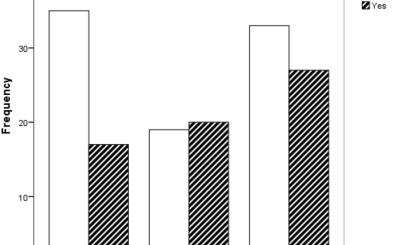Derivatives have become increasingly popular and can help investors manage risk, increase returns, and speculate on the market. But they are also complex and can be risky for novices to use.
Risks that may come with stocks when traded over-the-counter include counterparty risk, interconnection risk and liquidity risk.
Risk management tools
These financial instruments derive their value from one or more underlying assets. They allow investors to speculate on the price movements of those assets, hedge against risks, and manage them too. Derivatives can be traded privately (over-the-counter) or on exchanges; OTC derivatives are less regulated than exchange-traded ones and are thus more vulnerable to market volatility — several reputable organizations have already called for stricter regulations of OTC derivatives.
Some of the most common uses for derivatives include speculation and leverage. When speculating with derivatives, traders bet on where prices will go in the future based on what they know about an asset today. With leverage, they control larger positions with smaller amounts of money — both methods magnify potential gains but also losses. There is an entire industry centered around reducing the risks associated with derivatives by creating funds from these products using stable investment assets which reduce counterparty risk; however it’s important to note that regulatory changes can alter this strategy’s profitability in time.
Hedging purposes is another significant use for derivatives as they work as a form of insurance where investors pay a premium to protect themselves from losses if prices fluctuate unfavorably against them.
They are speculative vehicles
Derivatives allow traders to make bets on future price moves of the underlying asset. Whether expected or unexpected price drops or increases, you will find derivative contracts that profit off anticipated decreases (put options), futures contracts that benefit from rises in prices etc.. Derivatives can be found among capital market assets such as stocks, bonds, commodities, foreign exchange rates and interest rates or as separate securities, such as collateralized mortgage obligations (CMOs) and credit default swaps (CDSs).
Meanwhile there are important risks to consider. Failing to properly assess your risk tolerance and diversify your portfolio could result in substantial losses. In addition most derivative instruments are leveraged which means potential gains increase exponentially with every additional dollar you put down as margin.
Over-the-counter and exchange traded derivatives
Futures, forwards, swaps and options are the most common forms of derivatives. Futures contracts allow traders to lock in prices for a specific date; farmers for example use them to reduce their risks if prices fall unexpectedly. However this exposes them to counterparty risk because there is a chance the other party won’t fulfill their obligations. Forward contracts operate similarly but participants trade directly with eachother instead of using an intermediary like an exchange. Swaps permit investors to exchange one set of cash flows for another (e.g., switch fixed rate payments for floating rate payments) while options give the purchaser the right (but not obligation) to buy or sell an asset at a future date.
They provide leverage
Derivatives can help spread risks across markets and lower capital costs by making investment opportunities accessible to more people. They also make markets more liquid by creating more trading volume thereby spreading price information around efficiently too, even it is often difficult for newcomers to understand. Unfortunately they are prone to misuse, as exemplified in 2007-2008’s financial crisis when banks created mortgage-backed securities (MBS). The securitization process allowed other banks and investors to take on excessive leverage until the market crashed due to inevitable defaults.
Most common types of derivative products such as futures contracts, options, swaps and forwards carry individual benefits an risks which users must be aware of before deploying them into financial strategies
The protection against price fluctuations that derivatives offer is vital. You can use a derivative as an investment hedge to safeguard your money, create structured investments, and move capital internationally. Derivatives let you unbundle and shift risk around as well, which in turn lets you invest in safer assets.
Futures contracts, forwards, options and swaps are the most common types of derivatives. With a futures contract, two parties agree to buy or sell an asset at a particular price on a certain date in the future. This helps producers and consumers protect themselves from price fluctuations so they can plan accordingly.
Derivatives also allow investors to make innovative bets by speculating on the future prices of assets they don’t own themselves. This technique results in all kinds of benefits: lower purchase prices than their underlying counterparts; small down payments (margin) that are returned once the contract ends; interest on those margin payments; etc.










